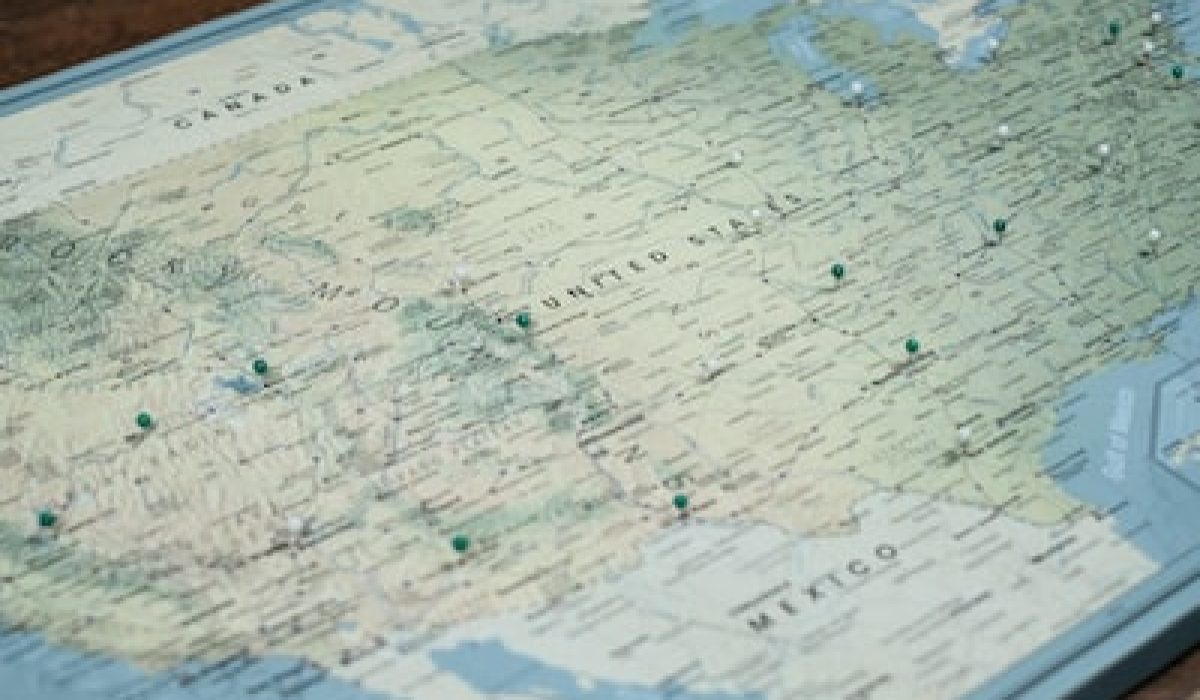Welcome to our latest blog post where we delve into the exciting world of animal tracking and scouting. Whether you are an avid hunter, wildlife enthusiast, or simply someone who appreciates the wonders of the natural world, understanding animal behavior is key. In this post, we will explore the importance of developing sharp observation skills, using essential tools and techniques, and the crucial role of stealth and camouflage in successful hunting. Furthermore, we will discuss the significance of patience and persistence in maximizing your tracking and scouting results. So, let’s embark on this journey together and uncover the secrets to effective animal tracking and scouting!
Understanding Animal Behavior For Effective Tracking ⏬
The Art of Tracking is a skill that has been practiced by humans for centuries. From ancient tribes hunting for food to modern-day wildlife researchers studying animal movements, tracking is essential for gaining insights into animal behavior. One of the key aspects of successful tracking is understanding animal behavior. By deciphering the clues left behind by animals, trackers can paint a picture of their habits, movements, and social structures.
Understanding animal behavior is the foundation of effective tracking. It allows trackers to anticipate the actions of their quarry, increasing their chances of a successful encounter. Animal behavior encompasses a wide range of activities, including feeding, mating, traveling, and defending territories. By studying these behaviors, trackers can gain valuable insights into an animal’s needs, preferences, and vulnerabilities.
The first step in understanding animal behavior is to develop a keen sense of observation. Trackers must pay close attention to their surroundings, looking for signs such as footprints, scat, and evidence of feeding or grooming. These clues can provide valuable information about an animal’s presence, its habits, and its interactions with other animals. By honing their observation skills, trackers can become more efficient at interpreting these signs and making accurate predictions about an animal’s behavior.
Another important tool for understanding animal behavior is knowledge of species-specific traits and characteristics. Different animals have unique behaviors and adaptations that are shaped by their evolutionary history and ecological niche. For example, a predator like a lion will have different hunting behaviors compared to a herbivore like a deer. By studying and familiarizing oneself with these species-specific traits, trackers can better understand the motivations and actions of the animals they are tracking.
| Signs of Animal Behavior | Description |
|---|---|
| Footprints | Tracks left behind by animals, providing information on their size, gait, and direction of travel. |
| Scat | Animal droppings that can reveal diet, digestive system, and health status. |
| Markings | Scent markings or scratches on trees or rocks that indicate territorial boundaries or communication between individuals. |
| Feeding Signs | Browse lines, chewing marks, or trampled vegetation that reveal an animal’s food preferences and foraging patterns. |
- Patience and persistence are key factors in understanding animal behavior. Tracking is not a one-time event; it is an ongoing process that requires dedication and commitment. Trackers must be willing to spend long hours in the field, patiently following trails and studying animal signs. By persistently tracking and observing animals over time, trackers can uncover patterns and trends in their behavior, leading to a deeper understanding of their habits and movements.
In conclusion, understanding animal behavior is crucial for effective tracking. By studying and interpreting the signs left behind by animals, trackers can gain insights into their habits, movements, and social structures. Developing sharp observation skills, acquiring knowledge of species-specific traits, and practicing patience and persistence are all essential tools for mastering the art of tracking.
Essential Tools And Techniques For Successful Scouting 👇
Scouting is a vital skill for outdoor enthusiasts, hunters, and wildlife enthusiasts alike. It involves observing and gathering information about the behavior and whereabouts of animals. To excel at scouting, it is important to arm oneself with the right tools and techniques. These tools and techniques not only enhance your efficiency but also increase your chances of successful tracking and encounter. Let’s explore some of the essential tools and techniques every scout should possess.
1. Binoculars:
One of the most important tools for scouting is a good pair of binoculars. These lightweight, portable optical devices allow you to observe wildlife from a distance without disturbing their natural habitat. Look for binoculars with high magnification power and a wide field of view to capture every detail of the animal’s behavior accurately. A good pair of binoculars can make a significant difference in spotting elusive creatures and identifying specific markings or behaviors.
2. Field Guide:
A comprehensive field guide is a must-have for any scout. It provides detailed information about various animals, including their physical characteristics, range, habitats, and behavioral patterns. Choose a field guide that covers the specific region or ecosystem you will be exploring. This valuable resource will help you identify animal tracks, scat, and signs, allowing you to decipher their movements and habits more effectively. Additionally, some field guides also provide audio recordings of animal calls, which can aid in species identification during scouting.
3. Camera and Notebook:
A camera and notebook combination is a powerful tool for documenting your scouting expeditions. Capture clear photographs of animal tracks, scat, and other signs of activity to study them later in detail. Additionally, photographing the surrounding environment can help you reconstruct the animal’s habitat and identify potential food sources or hiding spots. Alongside your camera, carry a notebook to jot down critical observations, behavioral patterns, and any other relevant information that you may want to reference or share with others later. Keeping a detailed record will allow you to analyze and learn from your scouting experiences.
4. Navigation Tools:
When venturing into unfamiliar territories, navigation tools become essential. A topographic map, compass, and GPS device help you navigate through dense forests, tracks, or even open landscapes. These tools enable you to mark waypoints, keep track of your path, and find your way back to camp or specific observation areas. Being adept at using these tools will help you maximize your scouting time and cover more ground efficiently.
5. Patience and Persistence:
While not tangible tools, patience and persistence are key attributes for successful scouting. Tracking and observing wildlife can be time-consuming and require extended periods of waiting for the right moment. It is vital to stay patient and persevere through any challenging conditions or setbacks. With time, patience, and persistence, you can develop a deeper understanding of animal behavior, refine your tracking skills, and increase your chances of a successful encounter.
By acquiring and honing these tools and techniques, you can greatly enhance your scouting abilities and increase your effectiveness as a tracker. Remember, scouting is not just about finding wildlife; it is about understanding their behavior and forging a deeper connection with the natural world.
Developing Sharp Observation Skills To Master Tracking
The Art of Tracking: Developing Sharp Observation Skills To Master Tracking
Tracking is not just a skill; it is an art that requires a keen eye and sharp observation skills. Whether you are a wildlife enthusiast or a seasoned hunter, mastering the art of tracking is essential for success. Developing sharp observation skills not only enables you to track animals effectively but also allows you to understand their behavior and movement patterns.
One of the essential tools for developing observation skills is patience. Tracking requires patience as you need to spend hours in the field, carefully observing your surroundings. It is crucial to remain silent and still, allowing yourself to blend into the environment seamlessly. By being patient, you enhance your ability to notice the slightest movement or sound, which can provide valuable clues about the animal you are tracking.
- Practice active listening: Apart from being visually observant, it is essential to develop your auditory senses. Pay attention to the sounds of nature, such as bird calls or rustling leaves, as they can indicate the presence of an animal nearby.
- Observe signs and tracks: Look for tracks, scat, scratch marks, or any other signs left behind by animals. By studying these signs, you can gain insights into their behavior, such as their preferred routes or feeding patterns.
- Use binoculars: Binoculars are a valuable tool for tracking, allowing you to observe animals from a distance without disturbing them. With a good pair of binoculars, you can study their behavior and movements without getting too close.
Besides developing observation skills, it is also crucial to understand the importance of camouflage and stealth in hunting. Animals have keen senses and can easily detect human presence. By blending into your surroundings and moving silently, you increase your chances of getting closer to your target without alerting it.
Remember, mastering the art of tracking requires patience and persistence. It may take time to develop your observation skills, but with practice, you’ll begin to notice and understand the subtle details in nature. Whether you are tracking for wildlife conservation or hunting purposes, honing your observation skills will undoubtedly enhance your tracking abilities.
The Importance Of Stealth And Camouflage In Hunting
Hunting is an age-old activity that requires a combination of skill, strategy, and patience. While many factors contribute to a successful hunt, one aspect that often goes overlooked is the importance of stealth and camouflage. The ability to move quietly and blend seamlessly into the surroundings can mean the difference between a fruitful outing and a failed attempt. In this blog post, we will explore the significance of stealth and camouflage in hunting and delve into techniques and tools that can enhance your hunting experience.
One of the key reasons why stealth and camouflage are crucial in hunting is the need to avoid detection by the targeted prey. Whether you are pursuing game animals or trying to get closer to observe wildlife, staying undetected is essential. Animals have highly developed senses that allow them to detect even the slightest movement or unfamiliar presence. By employing stealth and camouflage techniques, hunters can minimize their impact on the environment and increase their chances of a successful hunt.
When it comes to hunting, the element of surprise can play a significant role in achieving your objectives. By blending into the natural surroundings through suitable camouflage, you can effectively disappear from the sight of your prey. Camouflage clothing, gear, and accessories designed to mimic the colors and textures of the surrounding environment can help break up your silhouette and make you virtually invisible. This can make a substantial difference, especially in open areas or when stalking game that relies heavily on visual cues.
- Camouflage clothing: Investing in high-quality camouflage clothing is a must for any serious hunter. Opt for patterns that match the specific landscape you will be hunting in, whether it’s forested, grassland, or mountainous terrain. Camouflage clothing not only conceals your presence but also aids in blending seamlessly into the surroundings.
- Ghillie suits: Ghillie suits take camouflage to the next level. These suits are covered in strips of fabric or natural vegetation to help you blend into dense foliage or tall grass. Ghillie suits can effectively break up your human form and make it incredibly difficult for animals to spot you.
- Camouflage gear and accessories: Along with the clothing, there are various other gear and accessories that can aid in your efforts to remain hidden. Camouflage face paint, gloves, hats, and even blinds or covers for your hunting equipment can all contribute to a successful blend into the environment.
In addition to camouflage, mastering the art of stealth is equally vital. It involves being mindful of your every movement, minimizing noise, and employing various techniques to stay undetected. Avoid stepping on dry leaves or twigs that could create unwanted noise. Move slowly and deliberately, taking care not to make sudden movements that could startle the animals. By practicing stealthy movements and developing a heightened sense of awareness, you can effectively navigate through the hunting grounds without giving away your presence.
Ultimately, the role of stealth and camouflage in hunting cannot be overstated. They are integral components of a successful hunt and go hand in hand with other essential skills such as tracking, observation, and patience. By investing in the right camouflage gear, utilizing appropriate techniques, and mastering the art of remaining undetected, hunters can significantly increase their chances of a fruitful and rewarding hunting experience.
Maximizing Tracking And Scouting Results With Patience And Persistence
The art of tracking requires a combination of patience and persistence. It is not just about following footprints or animal signs, but rather a careful study of the subject’s behavior and the environment. To achieve successful tracking results, one must possess a deep understanding of animal behavior and use essential tools and techniques for effective scouting. However, without patience and persistence, all these efforts may go in vain.
Patience plays a crucial role in tracking. It is the ability to wait for hours or even days without losing focus, as the subject may not reveal itself easily. This might require sitting in a hidden location, observing the surroundings and anticipating the animal’s next move. A tracker must remain calm and patient, adjusting their actions accordingly to ensure minimal disturbance and to maximize the chances of spotting the animal.
Persistence is equally important in tracking. It is the determination to continue the pursuit, even in the face of setbacks or challenges. When a trail goes cold or the subject becomes elusive, a tracker with a persistent mindset will not easily give up. They will carefully analyze the signs, consult guides or experts, and try alternative approaches to reignite the tracking process.
Using the right tools and techniques is essential for successful tracking and scouting. Wildlife cameras, binoculars, and field guides are among the tools that help to gather information and study animal behavior. Techniques like mapping the territory, noting landmarks, and analyzing wind direction aid in identifying potential locations for tracking. These tools and techniques, combined with a patient and persistent approach, significantly increase the chances of achieving accurate and fruitful tracking results.
- Understanding Animal Behavior For Effective Tracking: To become a master tracker, one must develop a deep understanding of the behavior of the target animal. By studying their habits, movement patterns, and feeding preferences, a tracker can anticipate their behavior and position themselves strategically for effective tracking.
- Essential Tools And Techniques For Successful Scouting: Having the right tools and utilizing effective techniques is vital in scouting. This includes using wildlife cameras, binoculars, and field guides, as well as employing mapping skills and analyzing environmental factors such as wind direction for successful scouting.
- Developing Sharp Observation Skills To Master Tracking: Tracking is not just about following physical signs; it requires sharp observation skills. A tracker must be attentive to subtle clues, such as broken twigs, disturbed vegetation, or changes in animal calls, to accurately follow a trail and gain insights into the animal’s location and behavior.
| The Importance Of Stealth And Camouflage In Hunting: | Maximizing Tracking And Scouting Results: |
|---|---|
| In order to effectively track and scout, it is crucial to blend in with the natural surroundings and minimize any disruption to the environment. Stealth and camouflage techniques help in getting closer to the target without alarming them, increasing the chances of success in both tracking and hunting. | By combining the virtues of patience and persistence, a tracker can maximize their tracking and scouting results. With a patient approach, they can observe and analyze animal behavior while minimizing disturbances. Simultaneously, persistence allows them to overcome obstacles, adapt to challenges, and continue the pursuit until the desired results are achieved. |




